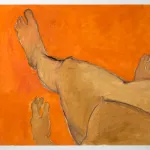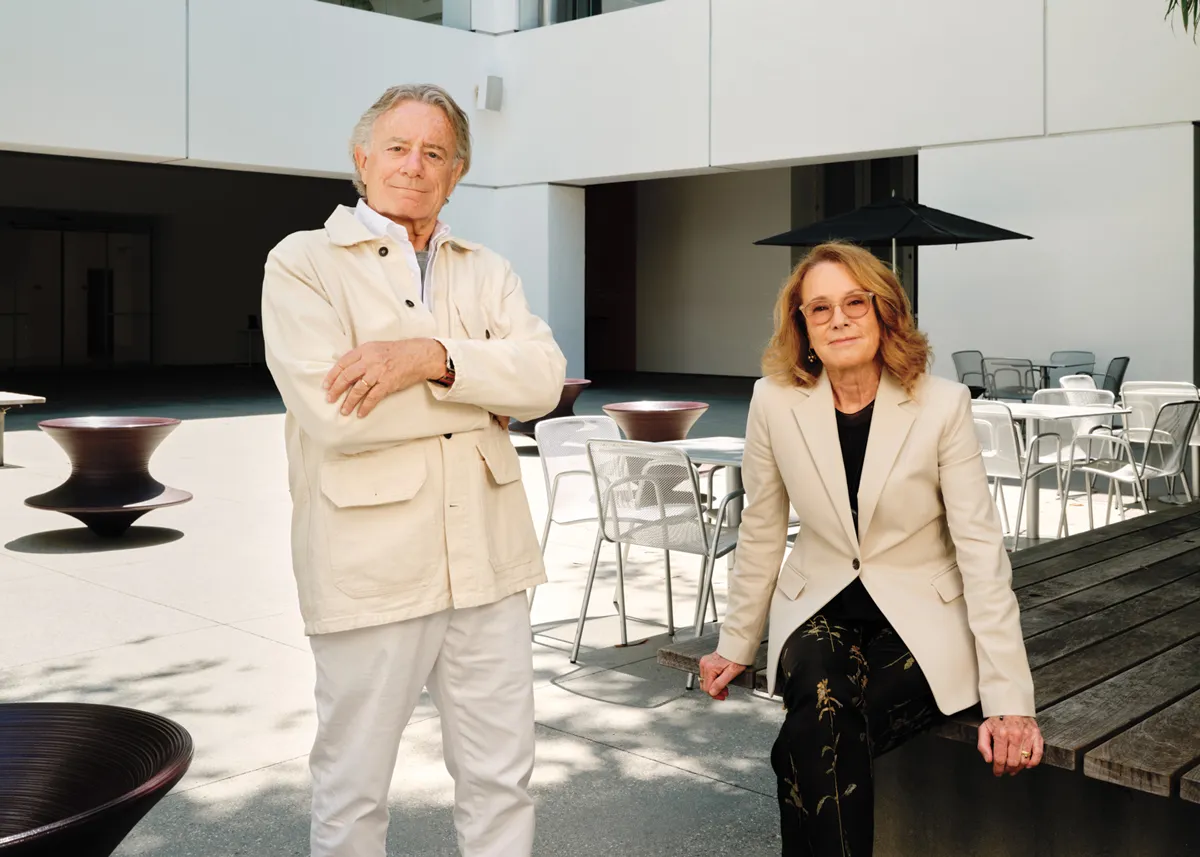
Ann Philbin has been the director of the Hammer Museum in Los Angeles since 1999. During her tenure, she has helped transformed the institution—which is affiliated with the University of California, Los Angeles—into one of the country’s most closely watched museums, hiring and developing major curatorial talent and establishing the Made in L.A. biennial. She also secured free admission to
the Hammer beginning in 2014 and spearheaded a $180 million capital campaign to transform the campus on Wilshire Boulevard.
Jarl Mohn is one of the ARTnews Top 200 Collectors. His Los Angeles home focuses on his deep holdings in Minimalism and Light and Space art, while his New York residence offers a look at emerging artists from LA. Mohn and his wife, Pamela, are also major philanthropists: they endowed the $100,000 Mohn Award for the Hammer’s Made in L.A. biennial, and have given millions to the Institute of Contemporary Art, Los Angeles (ICA LA) and the Brick (formerly LAXART).
In August, Mohn announced that some 350 works from his family collection would be jointly shared by three museums, the Hammer, the Los Angeles County Museum of Art, and the Museum of Contemporary Art. Called the Mohn Art Collective, or MAC3, the gift includes dozens of works acquired from Made in L.A., as well as funds to continue to add to the collection, including from Made in L.A. Earlier this week, Philbin’s successor was named. Zoë Ryan, the director of the Institute of Contemporary Art at the University of Pennsylvania (ICA Philadelphia), will assume the Hammer’s directorship in January.
ARTnews spoke with Philbin and Mohn in June at the Hammer’s offices to learn more about their love and support for all things Los Angeles.
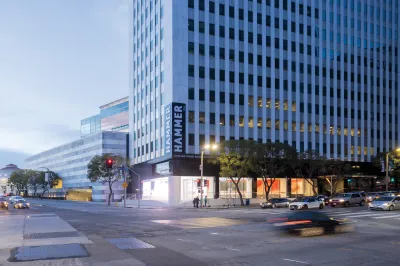
ARTnews: What brought you both to LA, and what was your sense of the art scene when you arrived?
Jarl Mohn: I was working in New York at MTV. Part of my job was to manage relations with record labels, music artists, and their managers, so I was in Los Angeles every month for a week for years. I would check into the Sunset Marquis in West Hollywood and spend a week going to the clubs, listening to music, calling on record labels. I fell in love with the city. I kept saying to myself, “I have to find a way to move to this town.” When I had the chance to move, I connected with HBO and they gave me Movietime, which I turned into E!
Ann Philbin: I moved to LA in 1999. I had been the director of the Drawing Center [in New York] for nine years, and I felt it was time to move on to the next thing. I kept getting letters from UCLA about this job, and I would throw them away. Finally, my friend the artist Lari Pittman called—he was on the search committee—and said, “Why haven’t we heard from you?” I said, “I’ve never even heard of that place, and I love my life in NYC. Why would I go there?” And he said, “Because it has great possibilities.” The place was empty and moribund but I thought, damn, I know what this could be. One thing led to another, and I took the job and moved to LA.
ARTnews: LA was a very different town 25 years ago.
Philbin: All my friends in New York were like, “Are you crazy? You’re moving to Los Angeles? You’re ruining your career.” People really made me nervous, but I thought, I’ll give it five years maximum, and then I’ll hightail it back to New York. But I fell in love with the city too. And, of course, 25 years later, it is a different art world here. I love the fact that you can build things here because it’s a young city with all kinds of possibilities. It’s not fully baked yet. The city was teeming with artists—it was the reason why I knew I would be OK in LA. There was something needed in the community, especially for emerging artists. At that time, the young artists who graduated from all the art schools felt they had to move to New York in order to have a career. It seemed like there was an opportunity here from an institutional perspective.
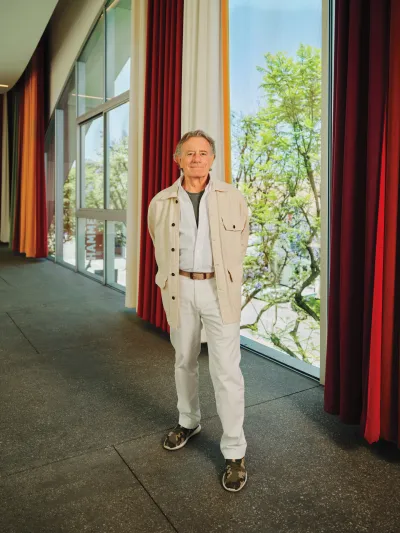
ARTnews: Jarl, how did you find your way from music and entertainment into supporting the visual arts and helping transform the city?
Mohn: It happened organically. I loved the city because the music, television, and film industries—the businesses I was in—have always been foundational elements of the city, and I love how creative the city is, now that we’re talking about the visual arts as well. This is a hotbed of creativity. Being around artists has always been very exciting and interesting to me. The way I came to visual arts is because we had a new house and my wife, Pam, said, “I think we need to start collecting art.” I said, “That’s the dumbest thing in the world—collecting art is crazy. The entire art world is set up to take advantage of people like us that don’t know what we’re doing. We’re going to be taken to the cleaners.”
Philbin: And you were! [Laughs.]
Mohn: —with a smile. I’ve been collecting now for 33 years. I’ve gone through different phases. When I talk to people who are interested in collecting, I always tell them: “Your tastes are going to change. What you like when you first start is not going to remain frozen in amber. And it’s going to take a while to figure out what it is that you really love.” I believe that collections need to have a thread, a theme, a through line to make sense as a true collection, as opposed to an aggregation of objects. It took me about 10 years for that first phase, which was my love of Minimalism and Light and Space. Then, getting involved in the art community and seeing what was happening around me and here at the Hammer, I became more aware of the emerging art community. I said to myself, Why don’t you start collecting that? I thought what’s happening here is what happened in New York in the ’50s and ’60s and what happened in Paris at the turn of the century.
ARTnews: How did you two meet?
Mohn: I don’t remember the whole story but at some point [art dealer] Doug Chrismas called me and said, “Annie Philbin needs some money for X artist. Would you take a call from her?”
Philbin: It might have been about Lee Mullican because that was the first show here, and Lee had just died so I wanted to honor him. All I needed was $10,000 for a brochure but I didn’t know anyone to call.
Mohn: I think I might have given you $10,000.
Philbin: Yes, I think you did help me, and you were the only one who did it without having to meet me and get to know me first. In LA, especially 25 years ago, raising money for the museum required that you had to know people well before you asked for support. In LA, it was a much longer and more intimate process, even to raise small amounts of money.
Mohn: I don’t remember what my motivation was. I just remember having a good conversation with you. Then it was a period of time before we became friends and got to work with each other. The big change occurred right before Made in L.A.
Philbin: We were working on the idea of Made in L.A. and Jarl approached the Hammer, MOCA, LACMA, and the Getty, and said he wanted to give an artist award, a Mohn Prize, to an LA artist. We tried to think about how to do it together and couldn’t figure it out. Then I pitched it for Made in L.A., which you liked. And that’s how that got started.
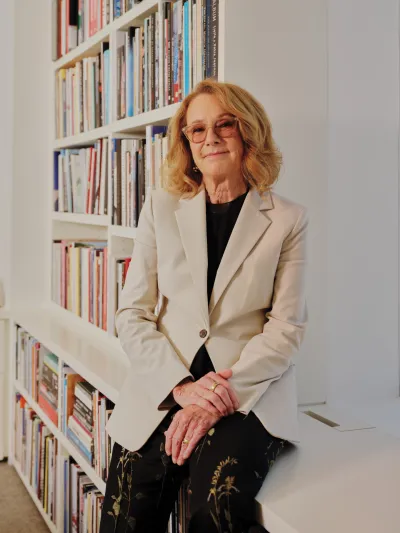
ARTnews: Made in L.A. was already in the works at that point?
Philbin: Yes, but we hadn’t done one yet. The curators were already visiting studios for the first edition in 2012. When Jarl said he wanted to create the Mohn Prize, I discussed it with the curators, my team, and then the Artist Council, a rotating committee of about a dozen artists who advise us about all kinds of matters related to the museum’s practices. We take their opinions and advice very seriously. We explained to the Artist Council that a collector and philanthropist named Jarl Mohn wanted to give a prize for $100,000 to “the best artist in the show,” to be determined by a jury of museum curators. Well, they didn’t like the fact that it was called a “prize,” but they felt comfortable with “award.” The other thing they didn’t like was that it would go to one artist. That required a larger conversation, so I asked the Council if they wanted to speak to Jarl directly. After a very tense and robust conversation, we decided to do three awards: the Mohn Award ($100,000); a Public Recognition Award ($25,000), for which the public votes on their favorite artist; and a Career Achievement award ($25,000) for “brilliance and resilience.” It cost Jarl a lot more money, but everyone came away very happy, including the Artist Council.
Mohn: And it made it a better idea. When Annie called me the first time to tell me there was pushback, I was like, ‘You’ve got to be kidding me—how can anybody object to this?’ But we ended up with something better. One of the objections the Artist Council had—which I didn’t understand completely then and have a greater appreciation for now—is their commitment to the sense of community here. They recognize it as something very special and unique to this city. They convinced me that it was real. When I look back now at where we are as a city, I think one of the things that’s great about LA is the incredibly strong sense of community. I think it differentiates us from almost any other place on the planet. And the Artist Council, which Annie put into place, has been one of the reasons that that exists.
Philbin: In the end, it all worked out, and the people who have received the Mohn Award over the years have gone on to great careers, like Kandis Williams and Lauren Halsey, to name a couple.
Mohn: I think the momentum has just increased over time. The last Made in L.A., in 2023, I took groups through the exhibition and saw things on my 12th visit that I hadn’t seen before. It was so rich. Every time I came through, whether it was a weekday morning or a weekend night, all the galleries were filled, with every possible age group, every strata of society. It’s touched so many lives—not just artists but the people who live here. It’s really engaged them in art.
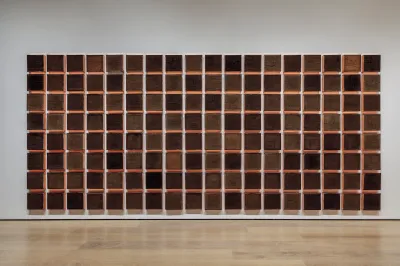
ARTnews: Jarl, more recently you gave $4.4 million to the ICA LA and $1 million to the Brick. How did that come about?
Mohn: There’s no grand strategy here. I could weave a story and reverse-engineer it to tell you it was all part of a plan. But being involved with Annie and the Hammer and Made in L.A. changed my life, and has brought me an incredible amount of joy. [The gifts] were just a natural extension.
ARTnews: Annie, can you talk more about the infrastructure you’ve built here, like Hammer Projects?
Philbin: Hammer Projects came about because we had the motivation, but we also had these small spaces all over the museum that were built for purposes other than galleries. They felt like perfect places for laboratories for artists—space in which we could invite artists early in their career to exhibit and not worry about “scholarship” or “museum quality” issues. We wanted to have a structure that could accommodate all these things—as well as experimentation, nimbleness, and an artist-centric approach. One of the things that I felt from the moment I arrived at the Hammer is that I wanted to make an institution that spoke first and foremost to the artists in town. They would be our primary audience. They would be who we’re going to talk to and make shows for. The general public will come later. It took a long time for the general public to know or care about what we were doing. Instead of focusing on attendance figures, this was our approach, and I think it worked for us. [Making admission] free was also a big step.
Mohn: What year was “THING”? That’s when the Hammer came on my radar.
Philbin: “THING” was in 2005. That was kind of the first Made in L.A., although we did not label it that at the time.
ARTnews: What about “THING” caught your eye?
Mohn: I’ve always liked objects and sculpture. I just remember how innovative that show was, and how many objects were in it. It was all new to me—and it was exciting. I just loved that show and the fact that it was all LA artists: Jedediah Caesar, Matt Johnson, Nathan Mabry, Rodney McMillian, Kristen Morgin, Joel Morrison, Kaz Oshiro, Mindy Shapero. I had never seen anything like it.
Philbin: That exhibition really did resonate for people, and there was a lot of attention on it from the larger art world.
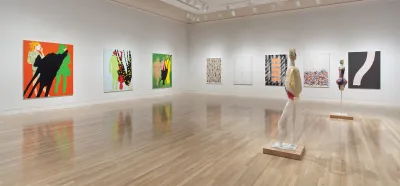
Mohn: I still have a special affinity for all the artists who have been in Made in L.A., particularly those from 2012, because it was the first one. There’s a handful of artists—including Analia Saban, Liz Glynn, Kathryn Andrews, Nery Lemus, and Mark Hagen—that I have remained friends with since 2012, and when a new Made in L.A. opens, we have lunch and then we go through the show together.
Philbin: It’s true you have made good friends. You filled your whole gala table with 20 Made in L.A. artists! What is amazing about the way you collect, Jarl, is that you have two distinct collections. The Minimalist collection, here in LA, is an impressive group of artists, including Donald Judd, Dan Flavin, Michael Heizer, Mary Corse, and James Turrell, to name a few. Then your place in New York has all your Made in L.A. artists. It’s a visual cacophony. It’s wonderful that you can so passionately embrace both those things simultaneously.
Mohn: That was another reason why I wanted to explore what was happening here with emerging artists. Minimalism and Light and Space—I love them. I’m not an expert, by any means, and there’s so much more to learn. But after a while I knew the artists, I knew the series, I knew the years. I wanted something in good condition with decent provenance at a price that makes sense. So I wondered, What’s something else I can mine? What can I dive into that will be an endless exploration?
Philbin: —and life-enriching, because you have relationships with the younger LA artists. These people are your buddies.
Mohn: Yes, and most of them are far younger, which has great benefits. We did a tour of our New York home early on, when Annie was in town for one of the art fairs with a bunch of museum patrons, and Annie said, “what I find really interesting is the way you’ve been able to find the Minimalist thread in all these new artists.” And I was like, “that is completely what I shouldn’t be doing,” because my purpose in getting involved in emerging LA art was a sense of discovery, something new. It forced me to think more expansively about what I was acquiring. Without my even being aware of it, I was gravitating to a very minimalist approach, and Annie’s comment really forced me to open the lens.
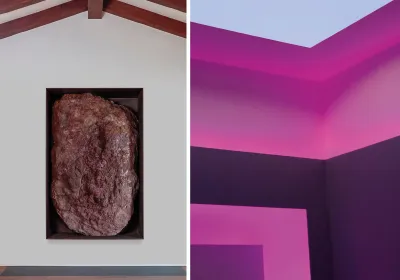
Philbin: You have one of the first Turrell theaters, right?
Mohn: I have the only one. There are a lot of spaces, but I have the only theater.
Philbin: Oh, I didn’t realize that. Jim designed all the furniture, and the whole ceiling of the room, of course, opens up to a Turrell skyspace. It’s a spectacular show before the show—and you got to work with Jim on that. And then the other mind-boggling ambitious piece in your collection is the Michael Heizer, which is your most recent installation. How many tons does that rock weigh?
Mohn: Three-and-a-quarter tons. It’s in my office, embedded in the wall—the rock in a box. I saw that piece originally when we went to City in 2007/2008. I fell in love with the piece, and then it came up years later at the FOG Design+Art fair [in San Francisco]. Gagosian was selling it. In a big space, all you have to do is truck it in and drywall. In a house, it’s a bit different. For us, it required removing an exterior wall, reframing it in steel, digging down four feet, putting in industrial concrete and rebar, and then closing my street for three hours, craning it over the wall, rolling it into place, bolting it into the concrete. Oh, and I had to jackhammer a fireplace out, which took seven days. I showed a picture of the construction to Heizer, who saw an exterior wall gone and said, “that’s a hell of a commitment.” I don’t want this to sound negative, but I wish more people who are committed to art were committed to not just the institutions that collect these things but to the concept of collecting things that are hard to collect, as opposed to buying a painting and putting it on a wall.
Philbin: Nothing is too much trouble for you! I just visited the Kramlichs up in Napa Valley. I had never seen the Herzog & de Meuron house and their media collection. It’s the perfect example of that kind of ambitious collecting of art that is very difficult for most collectors. The art came first, and they built around it.
Mohn: Art museums do that too. And that’s one of the great things that they do for the cities and the communities that they’re in. I think, for collectors, it’s important to have a collection that means something. I don’t care if it’s porcelain dolls from the Franklin Mint: just stand for something! But to have something that no one else has really makes a collection unique and special. That’s what I love about the Turrell screening room and the Michael Heizer. When people see the boulder in the house, they’re not going to forget it. They may or may not like it, but they’re not going to forget it. That’s what we were trying to do.
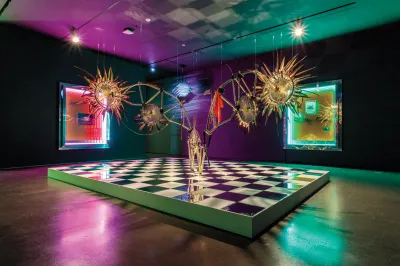
ARTnews: What would you say are some recent pivotal moments in LA’s art scene?
Philbin: I think the way the LA museum community has become so much stronger over the last two decades is a very important thing. Between the Hammer, MOCA, LACMA, the Broad, ICA LA, and the Brick, there’s an excitement around contemporary art institutions. Add to that the growing international gallery scene and the Getty’s PST ART initiative, and you have a very dynamic art ecology. If you count the musicians, filmmakers, visual artists, and makers in this town, we have more creative people per capita here than any place in the world. What a difference the last 20 years have made. I think this creative explosion is going to be sustained.
Mohn: A pivotal moment and a great learning experience for me was Pacific Standard Time [now PST ART]. What I observed and learned from that is how much institutions loved working with each other, which gets back to the notion of community and collaboration.
Philbin: The Getty deserves enormous credit for showing how much is going on here from an institutional perspective, and bringing it to the fore. The kind of scholarship that they have invited and supported has changed the canon of art history. The first edition was incredibly important. Our show, “Now Dig This!: Art and Black Los Angeles 1960–1980,” went to MoMA, and they purchased works of a dozen Black artists who entered their collection for the first time. That’s canon-changing. This fall, more than 70 exhibitions will open across Southern California as part of the PST ART initiative.
ARTnews: What do you think the future holds for LA and its art scene?
Mohn: I’m a big believer in momentum, and the momentum I see here is remarkable. I think it’s the confluence of a lot of things: all the institutions in town, the collegial nature of the artists, great artists getting their MFAs—at UCLA, USC, Otis, CalArts, ArtCenter—and staying here, galleries coming into town. As a business person, I don’t know that there’s enough to support all the galleries here, but I think the fact that they want to be here is a great sign. I think this is—and will be for a long time—the epicenter for creativity, all creativity writ large: television, film, music, visual arts. Ten, 20 years out, I only see it being bigger and better.
Philbin: Also, change is afoot. Change is happening in every sector of our world right now. I don’t know what’s going to happen here at the Hammer, but it will be different. There’ll be a younger generation in charge, and it will be exciting to see what will unfold. Since the pandemic, there are shifts so profound that I don’t think we have even realized yet where we’re going. I think the amount of change that’s going to be happening in the next decade is pretty unimaginable. How it all shakes out is nerve-wracking, but it will be fascinating. The ones who always find a way to manifest anew are the artists, so they’ll figure it out one way or another.
ARTnews: Is there anything else?
Mohn: I want to know what Annie’s going to do next.
Philbin: I have no idea. I really mean it. But I know I’m not finished working, so something will unfold.
Mohn: That’s good. I love hearing that. You’ve been too important to this town.
A version of this article appears in the 2024 ARTnews Top 200 Collectors issue.
